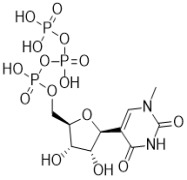BOC Sciences
About BOC Sciences
Categories

-
US
-
2022On CPHI since
-
250 - 499Employees
Company types
Primary activities
Products from BOC Sciences (2)
-
Product N1-MethylpseudoUridine-5'-Triphosphate
N1-MethylpseudoUridine-5'-Triphosphate is a modified NTP for incorporation into messenger RNAs (mRNA) using T7 RNA Polymerase. Incorporation of N1-methylpseudouridine can reduce the immunogenicity of the resulting mRNA. The sodium form N1-MethylpseudoUridine-5'-Triphosphate Sodium (B2706-358101) is in stoc... -
Product Polyquaternium 1
Polyquaternium 1 is an ophthalmic preservative.
BOC Sciences Resources (2)
-
News BOC Sciences Reports Strong Capabilities of CDMO Operations
BOC Sciences, one of the front-runners in chemical material manufacturing and custom services for the full drug product lifecycle, today reported strong growth over the past year in its expanded contract development and manufacturing (CDMO) platform.
-
Webinar Webinar: Naturally Occurring Sensitive Nucleic Acids, Applications and Chemical Synthesis
In this presentation, Dr. Shiyue Fang will showcase experimental examples of sensitive nucleosides, including their biological roles and relationships to clinical applications, challenges related to nucleic acids synthesis containing sensitive nucleosides, and the current status of the Dim-Dmoc method developed by his research group at the Michigan Technological University that overcomes related obstacles. In addition, Dr. Fang will also share personal opinions regarding the potential applications of sensitive nucleic acids accessible by the Dim-Dmoc method.
Resource from https://www.bocsci.com/webinar-naturally-occurring-sensitive-nucleic-acids-applications-and-chemical-synthesis.html.
Position your company at the heart of the global Pharma industry with a CPHI Online membership
-
Your products and solutions visible to thousands of visitors within the largest Pharma marketplace
-
Generate high-quality, engaged leads for your business, all year round
-
Promote your business as the industry’s thought-leader by hosting your reports, brochures and videos within your profile
-
Your company’s profile boosted at all participating CPHI events
-
An easy-to-use platform with a detailed dashboard showing your leads and performance




